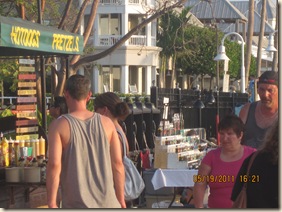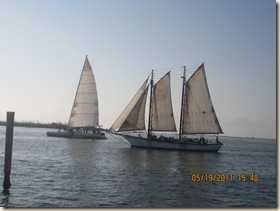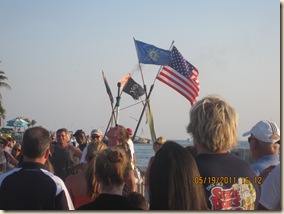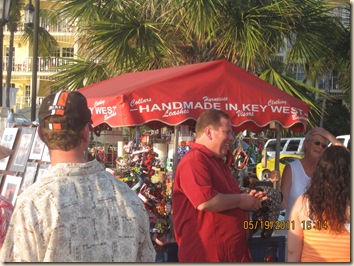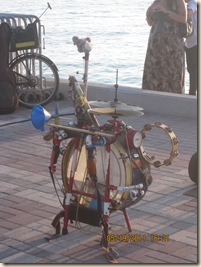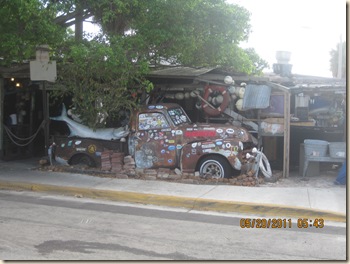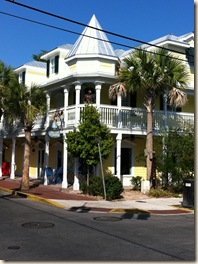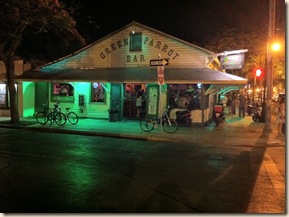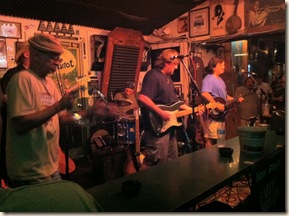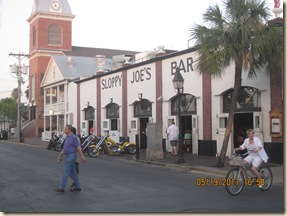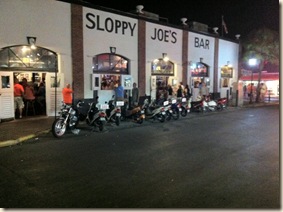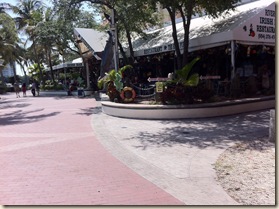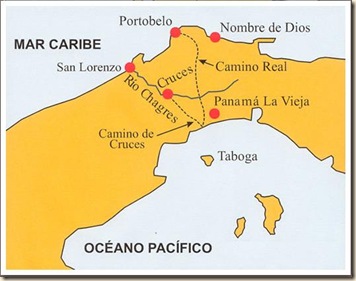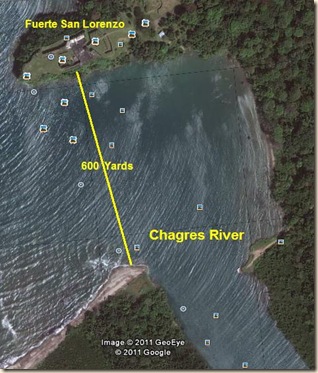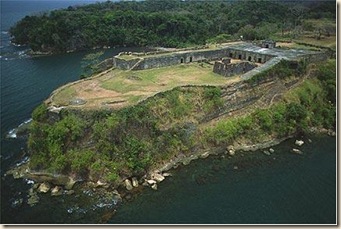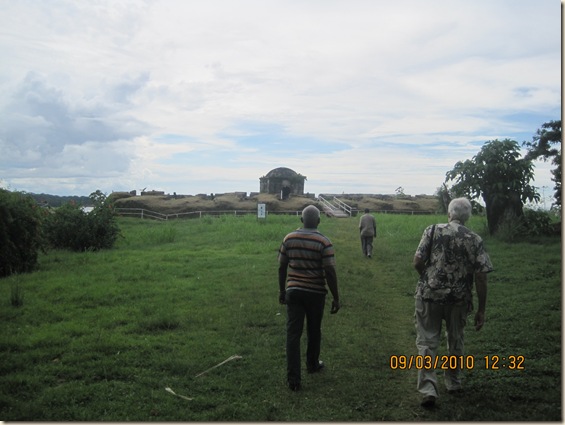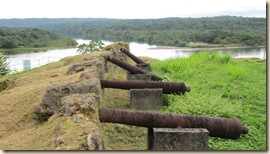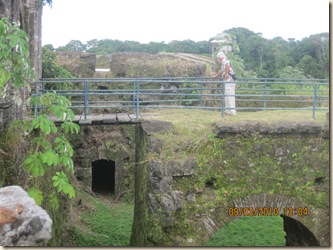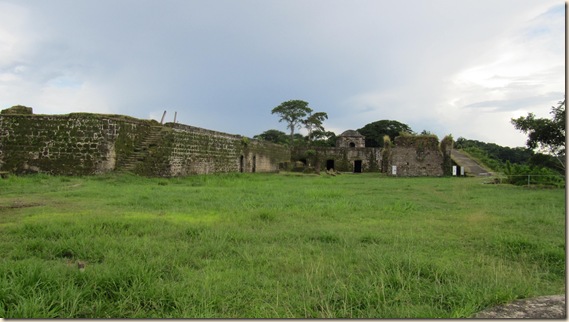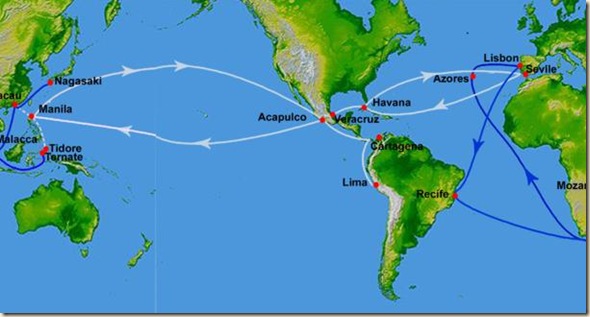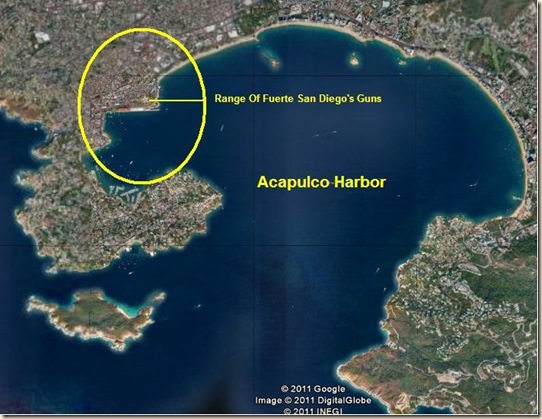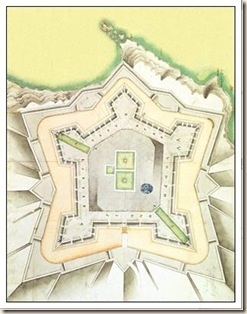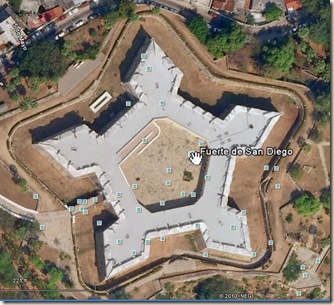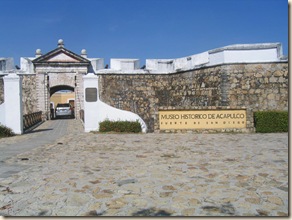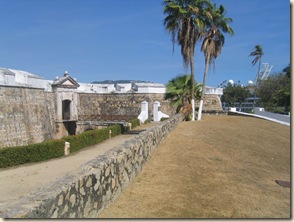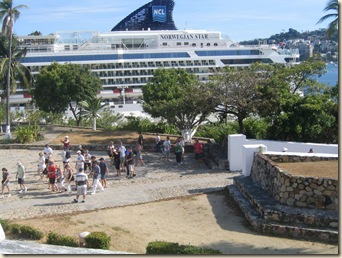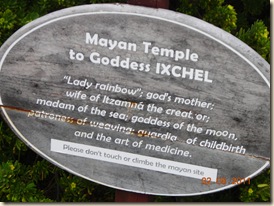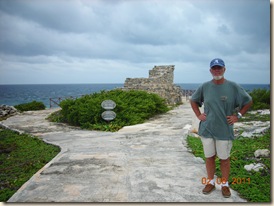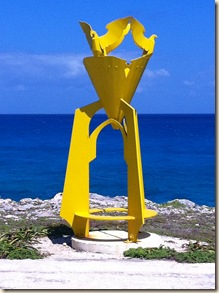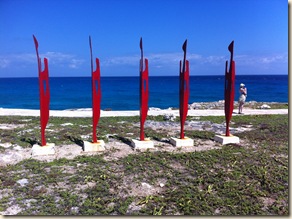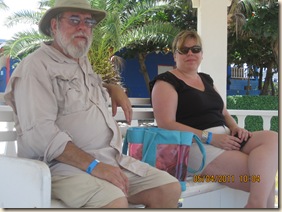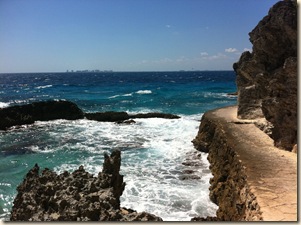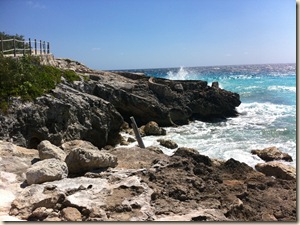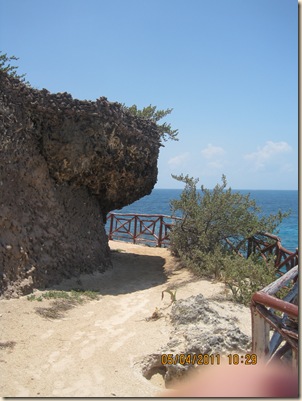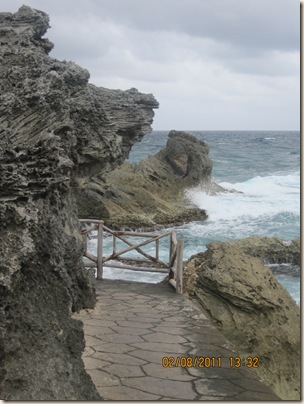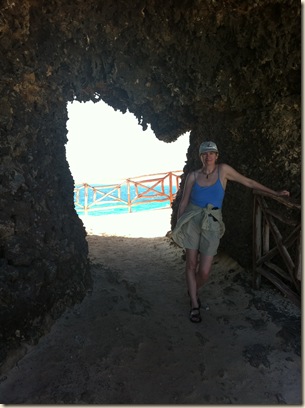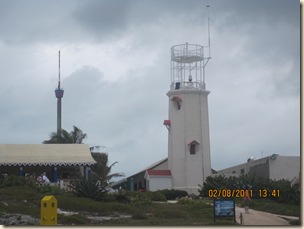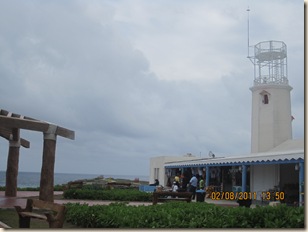Trip Summary: 5/13/11 to 5/27/11
By Bill Eddy
| Ports | Nautical Miles | Total | Avg. | Sailing | Sailing |
| Isla Mujeres, Mx To Dry Tortugas, US | 298 | 41.5 | 7.18 | 0 | 0 |
| Dry Tortugas To Key West, Florida | 63 | 9.0 | 7.00 | 0 | 0 |
| Key West, To Ft. Lauderdale, Florida | 169 | 26.3 | 6.42 | 0 | 0 |
| Totals: | 530 | 76.8 | 6.90 | 0 | 0 |
Virago Crew:
Paul Goss, Captain (Retired Business Consultant)
Bill Eddy, (Retired HR Exec)
Robin Matt, (Labor Arbitrator)
Day by Day Comments and Data:
Friday, 5/13/11:
Travel Day for Bill—Left Oakland at 9:52am. Good US Air flights on time on all counts. ADO Bus for 45 Pesos to Central Cancun taxi terminal, 50 Peso taxi to ferry terminal, and 70 Peso ferry ride from Cancun to Isla Mujeres. Arrived at Isla Mujeres and the Marina Pariaso and Virago at 1215 Saturday. My Captain Paul had a nice cool Vodka waiting for me and we visited and settled in. Robin had arrived earlier in the day from LAX and was sleeping below after a long travel day.
Saturday, 5/15/11:
Up at 0700 to start boat tasks, including total exterior wash down and a food/supplies inventory. Virago had been in a local boatyard for a bottom job and had all the usual dirt and yard scum on her. Temps in the 80’s in the am to 90’s in the pm. Best to do boat tasks in the mornings to beat the heat. In the afternoon, we taxied to the hotel zone for a tour and our first supply run at our favorite Express Market. There were few people in town, given that it was the low season due to heat. Upon return to the boat, we had sundowner cocktails and a pork chop and rice dinner on board. Paul and Robin did the cooking.
Sunday, 5/16/11:
Up at 0630 for tasks. These included a thorough interior sanitize and organization. Paul went up the mast for mast light and Windex repairs and general rig inspection. Upon inspection he found that the Windex was shot due to corrosion so complete replacement would be needed later.
In the pm, we went to town again ($3US taxi for all 3 of us per trip) for more shopping and back to the boat. After sundowner beers, we went to the Soggy Peso shore side palapa for rib night. Paul had discovered this place in the weeks before while he was in bed and breakfast mode. They run a different special every night at reasonable prices. By the time we got there at 6pm, they had run out of ribs. However, the place was really unique with lots of sailors at the bar. We went to town to Angelos for a nice dinner of ribs of course. Like so many other Mexican ports we have visited, the natives and tourists didn’t start to gather for dinner until 8-9pm to beat the heat.
On the way back to the boat around 9pm we walked to the town plaza (zocallo) where they had the Isla Mujeres cultural song and dance night going on. The stage backdrop was the Palacio Municipal, the city hall that was all lit up in colored lights. They had a sound system for the music, and the plaza was filled with friends and relatives of the performers, along with us tourists. It was a little “hokie” but sure fun to watch in the warm evening. We next returned to the Express Market to buy our final bottled waters, all we could reasonably carry and taxied back to the boat.
Upon return, we found that the couple in an Anteres 44 Catamaran adjacent to us had appropriated our boat steps. It wasn’t entirely clear why they took them, but we had a friendly talk with them and retrieved the steps for our departure tomorrow. We think they thought that the harbor master had given them the steps, or that they thought they were theirs. No harm done.
Monday, 5/16/11:
Up at 0700 for breakfast and prep work for departure, a day earlier than our schedule. Mild temperatures today. 76 inside and 81 degrees outside. This is the coolest temps we have experienced in Isla. Sky clear and light breeze at 5-8k NE. Upon final departure rig inspection, we found that both forward running lights were not working. Thus, we delayed our am departure and worked all morning and up until 3pm fixing the fixtures and wiring. It looked like corrosion had eaten the wiring connections on both fixtures and we did not have a spare set so these needed to be refurbished until we could get to the US and a marine store. While this was going on, we did get our passports stamped and Paul got us cleared out of Mexico officially.
At 3:55pm, we cleared our berth at Marina Pariaso, out of Isla Mujeres harbor and into the Yucatan Channel. Light breeze, calm sea state, and had to motor to make progress. Around 7:30pm, we had peanut butter and jelly sandwiches, and cantaloupe for dinner. Nobody was really hungry. We tried our new water flavoring in the small squeeze bottle and it was just as good as the powdered Nestea flavoring we had used in the past. However, with this, all you have to do is put a drop or two in a regular water bottle and shake it up. Much more convenient. We started our watch schedule at 8pm. With only 3 crew, Bill and Robin teamed for 8-midnight, Paul alone from midnight to 4, and Bill and Robin back for the 4-8am shift. Paul kind of got the shaft being alone with us on standby, but hopefully some alone time was good for mind clearing. During the night we passed the cruise ship Carnival Legend doing 6.4k for Cozumel and two freighters heading for Houston and Mississippi at 18k @.
On shift,we averaged around 8k, motoring with a robust 1k following sea and a 20 degree cross track. Full moon, wind at 2.0-5.0k NE, warm and flat sea state. No sailing possible, but good for sleeping below at least. Six ships passed us in the night heading south and west.
Tuesday, 5/17/11:
Up at 0400 for shift change. After Paul briefed us on conditions, Robin and I split the 4 hour shift in two. Seas still calm, wind 2-9k in wrong direction for progress without motor. At 0815, Paul came up after well deserved rest. We had fresh brewed coffee, fresh cut pineapple, hard cooked eggs and toast. Our friend Harry would be proud of us.
Mid morning, the forward head blew up on Robin. Reason unknown, but required lots of nasty cleanup. Will fix later and simply use the aft head for all of us until further notice.
At 1115, we passed the Carnival Inspiration heading to Cozumel from Miami. Thus far, all the sea life we have seen have been a very few flying fish. None have landed on the boat yet. We have covered 122nm by 0900 of the 298 mile leg. We expect to arrive at the Dry Tortugas Islands by mid day tomorrow.
We motored all day, took naps and Paul tried to fix the forward head. At that point it looked like a hose connection was loose so we think we are back in business. At sunset, a pair of little swallows came on board. Real love birds, and very unusual to see typical land based birds this far out in the ocean. Before 2000 shift, we had a nice beef stroganoff dinner and fresh fruit. We had been snacking on fruit, and chips and guacamole all day. By 2000 shift start, we were still motoring in the moonlight, in 2k breeze with a 2 knot following sea, 85 degrees and 3-5 foot swells. Great motoring weather if we had to do this. We were 70 miles north of Cuba in 8000 feet of water in the Gulf of Mexico.
Wednesday, 5/18/11:
Up at 0400 for 4-8 watch. Still no wind, full moon and 85 degrees. Only 2-3 freighters passed on Paul’s watch. At 0800, Virago arrived at the first Dry Tortugas marker. We followed the very narrow channel into the anchorage adjacent to the incredible Fort Jefferson. (See Pictures and brochures) We dropped anchor at 0930 in 15-20 feet of powder blue to white water.
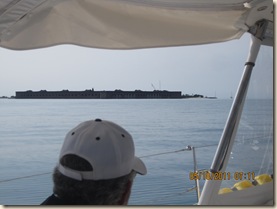 | 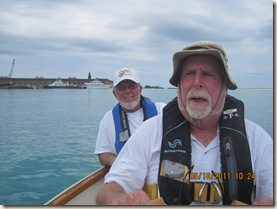 |
| We Approach Fort Jefferson | Rub a Dub Dub – Robin Rows Us Ashore |
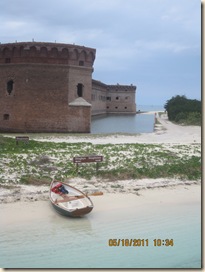 | 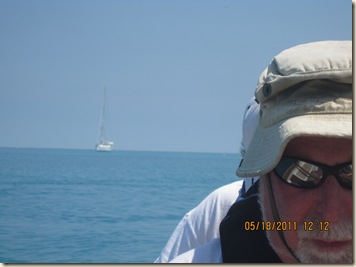 |
| Toyot Establishes a Beachhead | Robin Disguised as Stormtrooper Rows Back to Virago |
Remarkably, in literally the middle of nowhere, we met a fellow C-470 owner, anchored next to us. He was Carl Smeigh, the 470 group technical editor for Mainsheet Magazine, on his 470 “Southern Cross”. Carl lives in St. Petersburg Florida. After much Catalina yacht talk, Carl took Paul on his dinghy to the fort to register for our one night stay in the anchorage. Ft. Jefferson is managed by the US Park Service and Paul was charged $5 per person for the stay.
We launched Toyot for a row into the beach and a self guided tour of the extremely large and impressive fort. Robin did the rowing to shore and we spent 3 hours on the walking tour of the property. This was the largest of the Union forts to guard against a Confederate invasion by sea of the lower US and Florida areas. The fort, while essentially finished over several years, never had a battle. There was no water, and vegetation to speak of on these few sand spits of islands. However, millions of birds and turtles. Given its isolated location, the Union army used the fort for a prison for its deserters and other enemies of the north. Life was extremely harsh there and escape not a good option. Ft. Jefferson was built entirely of bricks, hauled by sailing vessels from the Maine area. Millions of them, so many, that the weight of the fort started to sink the near sea level island. This is a huge fort, 3-4 stories tall, massive in armament and gun galleries, with a deep moat all the way around it. Hard to describe how formidable this thing is.
After our walking tour, Robin rowed us back to Virago where all 3 of us took a swim in the 80 degree, crystal clear water. We had cocktail time then a pasta and meat sauce dinner with fresh vegetables. We plan to leave around 0600 tomorrow, following Carl out the northern anchorage exit to Key West, where he was heading home. By 8pm the wind was again calm, and there were 6 other sailboats and a couple of motor yachts in the anchorage. After dishes cleaned, we relaxed and hit the rack at 2200.
Note: The fort has a constant stream of tourists each day from Key West. They arrived by fast ferry and seaplanes each morning, stayed the day and returned home in the afternoon.
Thursday, 5/19/11:
Up at 0515 for departure to Key West, leaving the anchorage at 0620 for open ocean. With his many trips to the Dry Tortugas, Carl confidently guided us out of the anchorage and we buddy boated along, under power. Wind light and on the nose so no sailing today. We had coffee and toast for breakfast, and cup of noodles and fruit for lunch. By noon, we were adjacent to the Marquesas Keys between Dry Tortugas and Key West. Once used as a Navy bombing range, the totally deserted keys were rich with vegetation and palm trees. Quite a difference from the baron Tortugas. Reminded me of a South Pacific Atoll. All the keys for the rest of the leg up to Key West were rich with vegetation, many with fancy homes and resorts dotting their shores, and lots of boats anchored around them. A boaters paradise for sure.
We arrived outside the main channel to enter Key West, and Paul called the West Bight Marina to get a slip and directions. We had considered anchoring out, but the anchorage was a mile or two from land/docks, and without an outboard motor would have been too much work for us to transit. At our crew’s age, we may not have made it rowing. As we approached the town, we passed a small Royal Caribbean cruise ship docked and many other boats coming and going. After getting 30 gallons of fuel, we docked Virago at 1530. Paul made contact with Customs and Immigration and gave them enough information so we could stay and go ashore. We would have to go to the airport here to finalize customs check in and get passports stamped tomorrow.
After securing Virago we all took showers and went to town for dinner at the famous Turtle Kraals. A very good place for happy hour, our CDA, and comfort food. We landed in their rooftop bar overlooking the harbor and the northeast end of town. Quite picturesque. We had cheese burgers, cheese fries, grilled onions and coleslaw for $6.50, and $2.50 beers. Kind of like “Cheeseburgers in Paradise” in Key West. Paul and Robin’s burgers were not done well enough for their tastes, but perfect for me. Note: Didn’t stop Robin from cleaning his plate however.
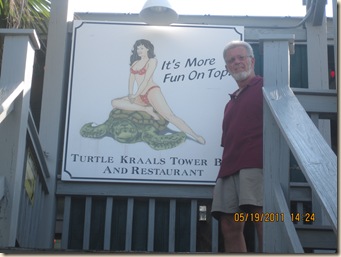 | 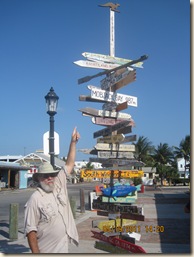 |
| Heading for Upper Level Dining at Turtle Kraals | Sign Points to Portland, Maine |
After dinner, we took the “Harbor Walk” around the city’s entire outer edge tourist areas. Hundreds of bars and restaurants, food booths, gift shops, craft stands, boutique shops of all kinds, street entertainers (jugglers, fortune tellers, escape artists, fire eaters, skate boarders, and street mimes and musicians).
As we traversed the walk, at least 8 heavily loaded sunset cruise sailing vessels headed by downtown. The bars were full and the whole scene was noisy and vibrant. The hotels and condos that line the shore were beautiful, most with ocean and bay views. We say museums, theaters and the central town park full of statues of the cities founding fathers.
After our walking tour, we returned to the boat for refreshments and calls home. Great to have strong cell phone coverage. Off to bed at 2230.
Friday, 5/20/11:
Up at 0700 for coffee and toast. At 0840, we headed off to the Key West International Airport by bus, to check in as instructed yesterday afternoon. We took one of the muni bus lines around the town and got a great sightseeing tour. We noted a broad range of home styles and quality. Lots of New Orleans style two story wood homes with large porches. We passed 100’s of small inns and hotels, various inlets full of boats, and the usual sad ghettos.
FIASCO!! At the airport we found that the customs and immigration officers were all at the cruise dock checking in a Carnival Cruise Line ship. We were told to come back after 1300 to see them. We waited 25 minutes for the next bus back to our docking area. Another sightseeing tour on that route, but no customs results. Back at the boat we gathered and washed our laundry, and did minor tasks on the boat.
At 1400, we again headed to the airport, on yet another sightseeing route and got our documents cleared and the boat checked into the US. Everything went smoothly and there were no “funny fees” to pay like Belize. (Captain’s note: We did have to order a decal from the Homeland Security Administration for $27. I pointed out that Virago had entered San Diego from Mexico without one and the official said, “Those guys don’t follow procedures.”) Robin and I got off the bus mid route at a Winn-Dixie store where we got minor supplies for the rest of our trip to Lauderdale. Once done, we taxied back to the boat with our groceries and put the purchases away. I transferred fuel from deck jugs to the empty port tank, leaving only 6 gallons still in deck.
At 1930 we had pasta and beef bowl for dinner then finished tasks. By 2000 we were relaxing in the cockpit after a big day of riding busses and wasting our time with the Homeland Security processes. A necessary evil! At 2100 Paul and I went in search of a good Key West dive bar with some music. We found the famous Green Parrot, with full bluegrass band, packed house of characters (locals mostly), and loud.
We then moved next door for better music. Just as we sat down and ordered a drink, the band played their last song and packed up. Should have asked. We finished our drinks and walked around the endless entertainment district and listened to 5-6 more bands.
The bars and sidewalks were packed with party folks, numerous bachelor and bachelorette parties and such. Unreal atmosphere. Drinking on the streets is legal in a plastic cup. We were told that there are 300 bars and clubs in town. Notwithstanding the customs/immigration fiasco, that delay led to a fun time seeing this unique town for an extra day. Paul and I were home by 1215 for sleep.
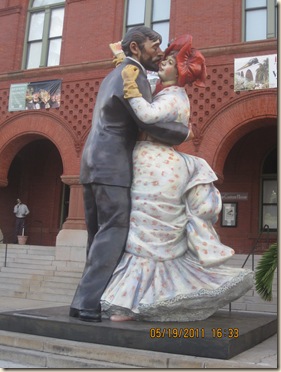 | 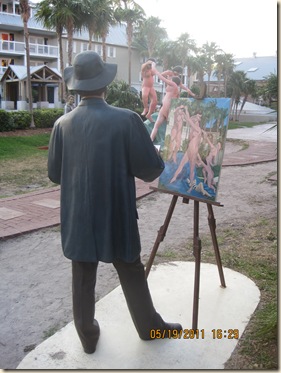 |
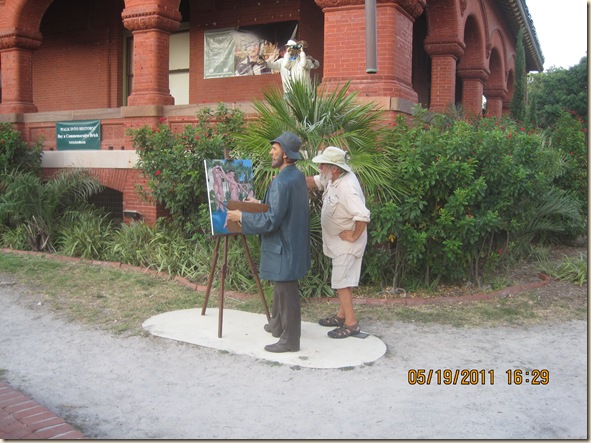 |
| Everybody wants to get into the act! These are amusing sculptures on the grounds of the old city hall. Key West is truly a party town. |
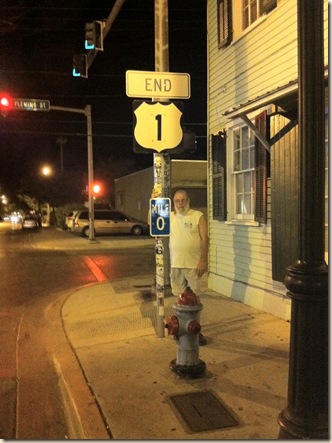 | Key West is the Southern terminus for US Route 1 which has its Northern terminus in Fort Kent, Maine. BTW: The captain has been there also, but not by boat. |
Saturday, 5/21/11:
Up at 0700 to start the departure process and tasks. We had a nice apple pancake and coffee breakfast, cleared the deck of fuel cans and misc. stuff, hosed the boat off, filled the water tanks and took off for Ft. Lauderdale at 1050.
We exited past the now empty cruise docks, around the city front and out into the Straits of Florida. It was a clear day, 5-8k breeze, flat sea, mid 80’s, and easterly wind on the nose. No sailing for now. Our route took us up the entire chain of keys at 5 miles off shore at the most. We were just outside the various barrier reefs and inside the shipping lanes. Very pleasant conditions, viewing all the islands and their connecting bridges and causeways from the water. Again, a boater’s paradise. The only excitement was on Channel 16 from the Coast Guard. Subjects included a would be bridge leaper in Marathon, a red flare sighting off Biscayne Bay, and a PLB set off near Miami.
Dinner was served at 1900 by Robin. It was the long anticipated Polynesian Surprise (see pictures) This is a concoction of beans, span cubes, pineapple and seasonings we think. It was served in a bowl with bread. One of my pictures is of our Captain actually eating it with a smile on his face. Good fun!! Where is Harry when we need him. The rest of the evening we maintained our same watch schedule that saw 10-12 cargo ships passing n/s about 6 miles off our starboard side in the shipping lanes. Breeze seemed good but on the nose. No sailing yet. Between the reefs and the shipping lanes, we really didn’t have a lot of room to sail anyway, and get to Lauderdale in a timely fashion.
Sunday, 5/22/11:
Up at 0400 to partial moonlight, a view of Key Largo, 8-11k breeze on the starboard bow. At 0200 Paul had deployed the jib for stability and a sail attempt. The current was favorable and by 0500 we were motor sailing at 8 plus knots in 7-10k breeze. However, no true sailing was going to happen. By 0530 we could see Biscayne Bay, the last key area and the large Miami skyline in the distance.
Special Note: Around 0500, in the dark, we passed within 75’ of a large catamaran with 4 crew in the cockpit. We were on opposite headings. The important point is that this very large cat left no radar image on our set at close range settings at all. We know our radar is golden as we saw all kinds of other objects all trip and after this incident. Shows the importance of watch personnel on deck observing at all times. We altered heading by a few degrees for safety once we saw the vessel.
By 0800, we were off So. Miami Beach and floated by the entire city front. We were so close we could see some of the much televised So. Beach hotels. The entire waterfront was full of 30-40 story condos and office building of all shapes and sizes. Boats were everywhere. We had breakfast of cheese toast and coffee and continued to motor to the entrance to the Port Everglades/Ft. Lauderdale port channel. We entered the channel with tanker and freighter traffic, and stopped until the 17th Street drawbridge was to open. We were right in front of the Princess Cruises terminal where Nora and I embark on our cruises. The only cruise ship in the big harbor was the Royal Caribbean’s Allure of the Seas, one of the biggest such ships there is. Once the drawbridge opened we motored up to the entrance of the New River that goes roughly into the downtown area of Ft. Lauderdale. We turned to port. Had we turned starboard at the intersection, we would have been in the continuing Inter-coastal waterway. Along the New, we saw hundreds of beautiful water/channel front homes, many with very large motor yachts docked in front of them. Our destination was the Old Town Marina in the thick of the condos and the famous River Walk of Ft. Lauderdale. We found our slip and side tied at 1210 hours.
Special Note: This docking marks the last leg of my journey with Paul, after close to 5000 nautical miles of cruising on Virago, starting in October of 2009 in Alameda, CA. What fun!! Paul is continuing on to Maine from here, to arrive amid fireworks in his favorite anchorage of all time.
We’re side tied right on the River Walk amid the high-rise condos and restaurant areas. On the shore side are walkers and their pets, on the water side is the river channel with its never ending stream of boats traversing the area. We will see the harbormaster later on to figure out where we really are and how to access services here. We all called home. Good to hear Nora’s voice and catch up on home items. 85 degrees inside Virago and 93 outside.
We spent the afternoon putting things away, decanting the last of the deck fuel jugs into our tanks, cleared the deck and went ashore for walk and a shower. Little did I know that the shower was a 25 minute walk in the humid heat up the River Walk . Robin and Paul showered on the boat as I should have done with 20/20 hindsight. The boys went to the market so Robin could use the ATM and Paul could pick up some items for dinner. At 1745, with fresh clothes and body, I relaxed in the cockpit with a vodka until the shoppers returned. At 1900 we had takeout dinner on board, and hit the sack at 2100.
Monday, 5/23/11:
Up at 0745 after much needed sleep. Robin and I walked up to a local Starbucks for coffee and to use their head, since ours was a 25 minute walk. Upon return, we had coffee and planned out boat mtce tasks for the remaining time Robin and I had on board. Paul went by bus to the closest West Marine and got parts to fix the forward head. Upon his return we walked to the harbormaster’s office and got good info on local facilities, vendors and drawbridge operations. We also set up our boat move up the river to a better section of marina called Cooley’s Landing Marina for tomorrow morning. According to
the office staff, our move must be done on slack tide between 0945 and 1030 hours.
We went to the Publix Market for supplies and returned to the boat for tasks. We did deck surface rust removal while Paul worked on the head and Robin cleaned out the refer/freezer boxes. Paul made another trip to West Marine for some electrical parts for the head. By 1900 we were tired so had dinner of angel hair pasta and rotisserie chicken from Publix. By 2230, we folded after calls home. Always good!!
Tuesday, 5/24/11:
Up at 0720. Moving boat this am. Went to Starbucks for coffee and a dump, then back to relo the boat. The slack current in the river was in a tight time frame so we had to be efficient. The bridges are coordinated, so once you give one drawbridge operator your timing and destination, he notifies the successive bridge operators and they automatically open said bridges. We made it to Cooley’s on time and docked up with little trouble. Once set up, Paul continued with head repair, ahead of getting a UPS delivery of a new $500 controller soon. The head was terminal without it after several phone consultations Paul had with the manufacturer. We accomplished tasks and watched a mother duck and 13 babies trailing behind her. She, like boaters trying to dock, waited for slack river flow to traverse across the river. Her nesting and resting area was right in front of Virago on the dock, where long term berthers apparently feed her and her brood regularly.
| Virago Safe at the Dock | |
We went to dinner at 1800 at Brinneys Irish Pub on the River Walk, to celebrate Robins last night with us. Food was good and the place had a ceiling covered with nautical items. Being an Irish Pub, they had a countdown timer on the wall counting down days, hours, minutes and seconds until St. Patrick’s Day. We returned to the boat at 2000 and enjoyed the busy river boat traffic and a little cool breeze. The drawbridge near our boat was up and down all day and night except during business commute hours. The bridge traffic alarm was our clue that a large boat was coming by soon. The boats ranged from canoes, to multi million dollar mega yachts, some under power and some being towed. Very lively boating community for sure.
Wednesday, 5/25/11:
Up at 0645 for coffee and tasks. Paul went up the mast and installed the new Windex at 0830. Later, we visited and sent Robin on his way to his aunt’s house in Sarasota Florida where he planned a visit before his trek home to Ventura. I washed the boat exterior and Paul retrieved 2 out of 3 boxes he was waiting for from Garhauer Marine containing our new dinghy davits. These boxes had made mistaken journeys to the Bay Area, then redirected by UPS to Florida somewhere, then to our Marina. The third box did not make it. It contained the cross braces and hardware to finish the job. Hopefully coming before Paul has to leave for the next leg of the trip. Paul made another bus trip to West Marine and exchanged one of the interior fans for a new on. Now all fans work beautifully. At 1730, Paul and I unpacked the main davit parts and did a visual first fitting to see if clearances were ok for an install tomorrow. There appeared to be plenty of room below the helm area to access and set bolts for the davit bases. This was a big relief for both of us. We celebrated the day’s accomplishments (see list) with sundowners and returned to Brinneys Pub for dinner. Food good again.
Thursday, 5/26/11:
Up at 0715 for coffee and toast. We then started the davit base install, then the main arms and their attachments to the stern rails. It all went smoothly and we finished all we could do without the missing box of cross braces, by 1130 hours. We had a beer and started interior cleaning and organizing for the benefit of the next crew, arriving tomorrow. (Marj, Jennifer and Lorraine). A dock neighbor who happened to have a Catalina 470, took pity on us and offered to buy and bring back beer on his grocery run. With mid 90’s heat and humidity, we welcomed his offer. We worked through the day cleaning and putting things away. Still waiting for the third UPS box. Around 1700 we took showers and once again went to Brinneys. The place has such a large and diverse menu, you could eat there for 5-10 days and not have the same thing twice. Home to bed by 2150.
Friday, 5/27/11:
Up at 0745. Did boat tasks and extreme cleaning for the final time before it was time to take the bus to the airport. My last time on Virago for this voyage to Maine. Paul left ahead of me to meet the new crew at the airport and I followed shortly thereafter. Alone on Virago, I had time to remember all the great sailing and good times Paul and I and the various crew had together. We visited and enjoyed a lot of countries, their people and cultures. I think we will call this “a once in a lifetime opportunity”. My walk to the bus stop was the first time on this leg that it rained, and rain and thunder it did. When I got on the bus the rain let up but I was soaked. I forgot this part of Florida living. No thanks. Trip home was smooth and on time. I know Paul and the new crew will have a blast going up the east coast, and I look forward to getting the SPOT messages and following their progress.
The End
